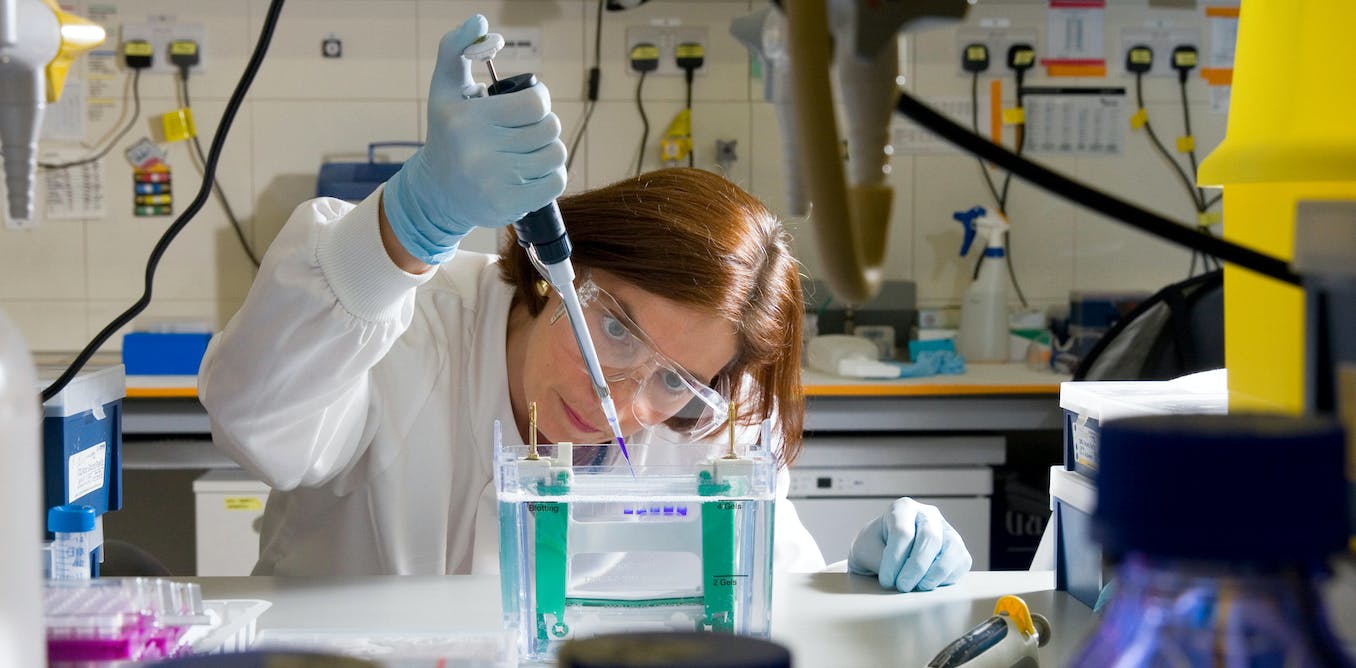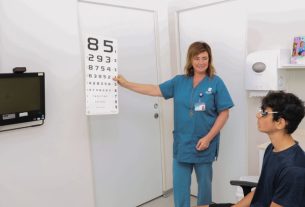In 2020, 19 million people around the world received a cancer diagnosis. By 2040, that number is expected to reach 28 million. Poorer countries will be especially hard hit, with an increasing number of cases and more deaths, compared with richer countries.
Cancer research is vital to helping ease this global burden, but where and how research money is spent doesn’t always match with where and how help is needed. To get a clearer picture of where cancer research funding is spent, we collected and compiled data covering public and charitable cancer research investments, globally, between 2016 and 2020, inclusive. This amounted to US$24.5 billion (£19.7 billion) of investment across 66,388 research grants.
By country, the US provided 57.3% of the total cancer research funding awarded, with the US National Institute of Health being by far the biggest funder. Most of the world’s biggest funders are transparent about their funding decisions, providing data on their grants. This allows for scrutiny around their portfolios and allows those who set funding priorities to better understand how to allocate limited resources for health research.
Among the major global health funders, Cancer Research UK is one of the few that does not provide data on funding at the individual award level. They rely on top-level summaries in annual reports and other infographics, which is insufficient for analyses such as ours. This makes it difficult to look into how the money was spent in detail.
Lung and thyroid cancers least funded
Our analysis compares the level of funding given to researching different types of cancers with the health burden of those types of cancer. This is important as it allows us to understand who is funding what in cancer research and to understand whether research gaps may exist.
We found that the cancer types receiving the most funding were breast (US$2.73 billion, 11.2% of the total) and haematological cancer (typically referring to leukaemia, US$2.3 billion, 9.4%).
In terms of the type of research, preclinical research (typically laboratory studies) received US$18 billion (73.5%). Pre-clinical studies are the earliest stage of research. The hope is that the findings from this stage of research will eventually “translate” into new or better treatments for cancer.
Preclinical studies are followed by testing in humans – clinical trials – which can take many years. If a drug or other treatment is proven to work, it then has to be approved by the drugs regulators, such as the US Food and Drug Administration or the European Medicines Agency.
The time taken from exploring preclinical science to a treatment used in practice can be up to 17 years. Most new products fail between the preclinical or clinical trial phases – more so in oncology (the study and diagnosis of tumours) than other areas of medicine.
Immuno-oncology is a relatively new therapeutic area that tries to develop treatments to enhance the body’s immune system to fight cancer. In our analyses, immuno-oncology received 12% of the funding, reflecting the global desire to find new approaches to cancer treatments. However, such are the inequities in global health, that even if immuno-oncology and other new medicines make it into clinical practice, this will usually be in the richer countries. Poorer populations are unlikely to have access to the latest treatments.
We then looked at what investment 18 different types of cancer received and compared this against the number of deaths caused annually by each type of cancer. Our results suggest that lung cancer was particularly poorly funded.
We also reviewed a measure called “years lived with disability”, which considers the effect of that disease on quality of life. Here, thyroid cancer came out as least-well funded. Both lung and thyroid cancers were judged to be the least well-funded cancer conditions overall, compared to their global burdens.
Cancer funding fell 45%
Our results show an average annual spend over the years 2016-19 of US$5.5 billion per year, with a 45% drop to US$2.9 billion in 2020. This might have been a natural fluctuation – cancer funding levels were declining to some extent – but it’s possible the drop was caused by a diversion of funds into COVID research.
It’s also likely that these drops in funding will mean less new knowledge coming through the cancer research pipeline. This will further affect patients at a time when the global burden is likely to increase, and may also drive further inequalities around access to cancer treatment and care.
Only 0.5% of cancer funding had a primary focus on lower-income countries, so it will not be easy for populations in poorer countries to benefit from new research findings. There was significant inequity in the COVID response, for example, with the distribution of vaccines during the height of the pandemic. There will be continuing consequences for wellbeing in other areas of health, with the worsening burden of cancer estimated to cause a drop in life expectancy.
From previous experience, it’s fair to suggest that much of the preclinical research funded – by far the largest component of the portfolio – might not make it as far as being used in clinical care, and therefore only a small proportion of the current cancer research portfolio is going to be of direct benefit to patients at any point soon.
While some of this funding is, of course, essential for developing new treatments, the sheer volume of funding in this area means the overall portfolio may not be money well spent. While some of this type of research spending has driven innovative areas of medicine (such as immuno-oncology), there should be a new focus on prevention and also patient-focused research (such as the psychological and social effects of cancer).
There will be long-term consequences of the pandemic on other areas of health, including cancer. Our analysis showed the flow of funding into cancer research. This can help the global cancer research community better set future priorities. We must invest our limited global research resources as wisely as possible.



